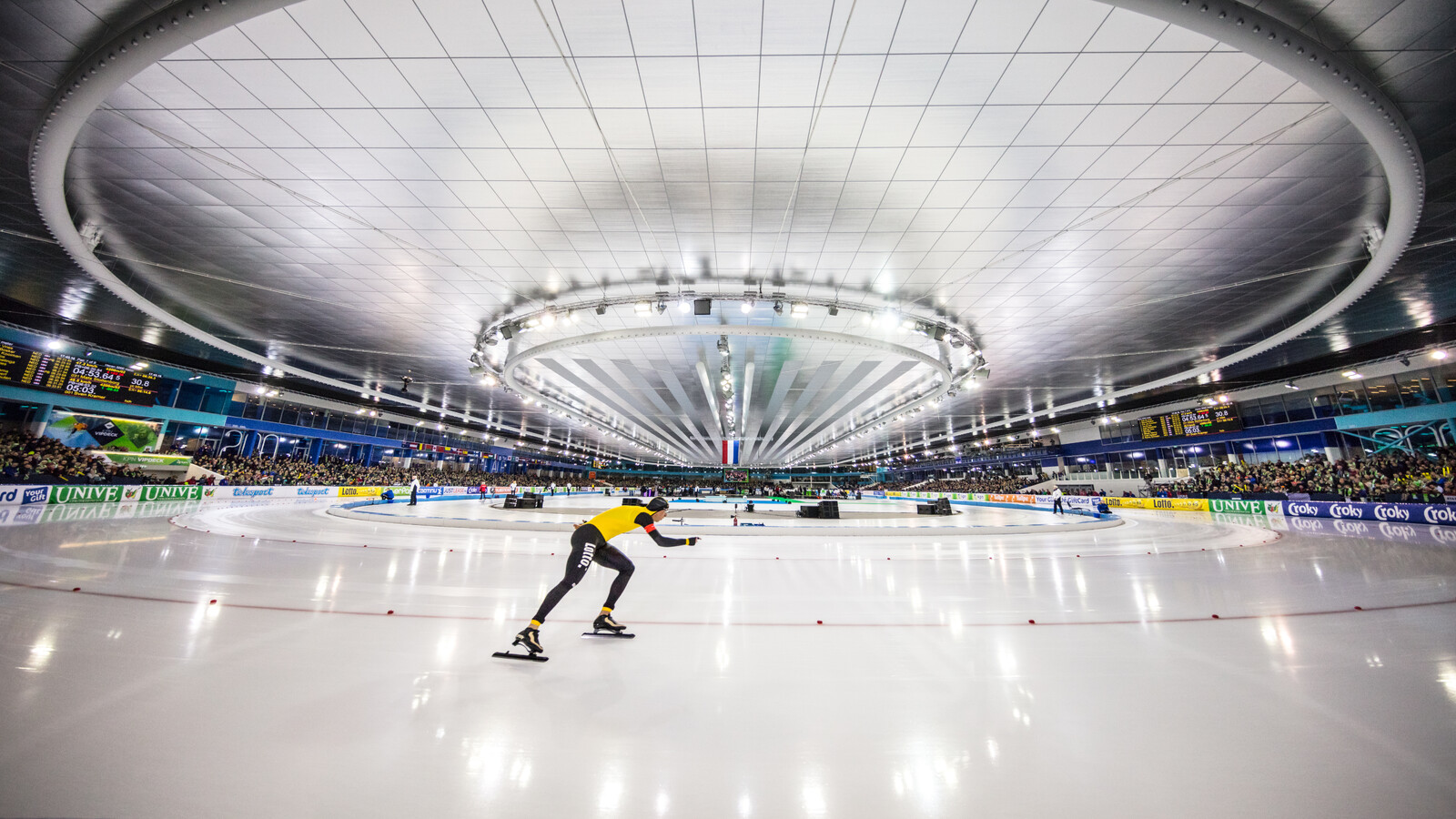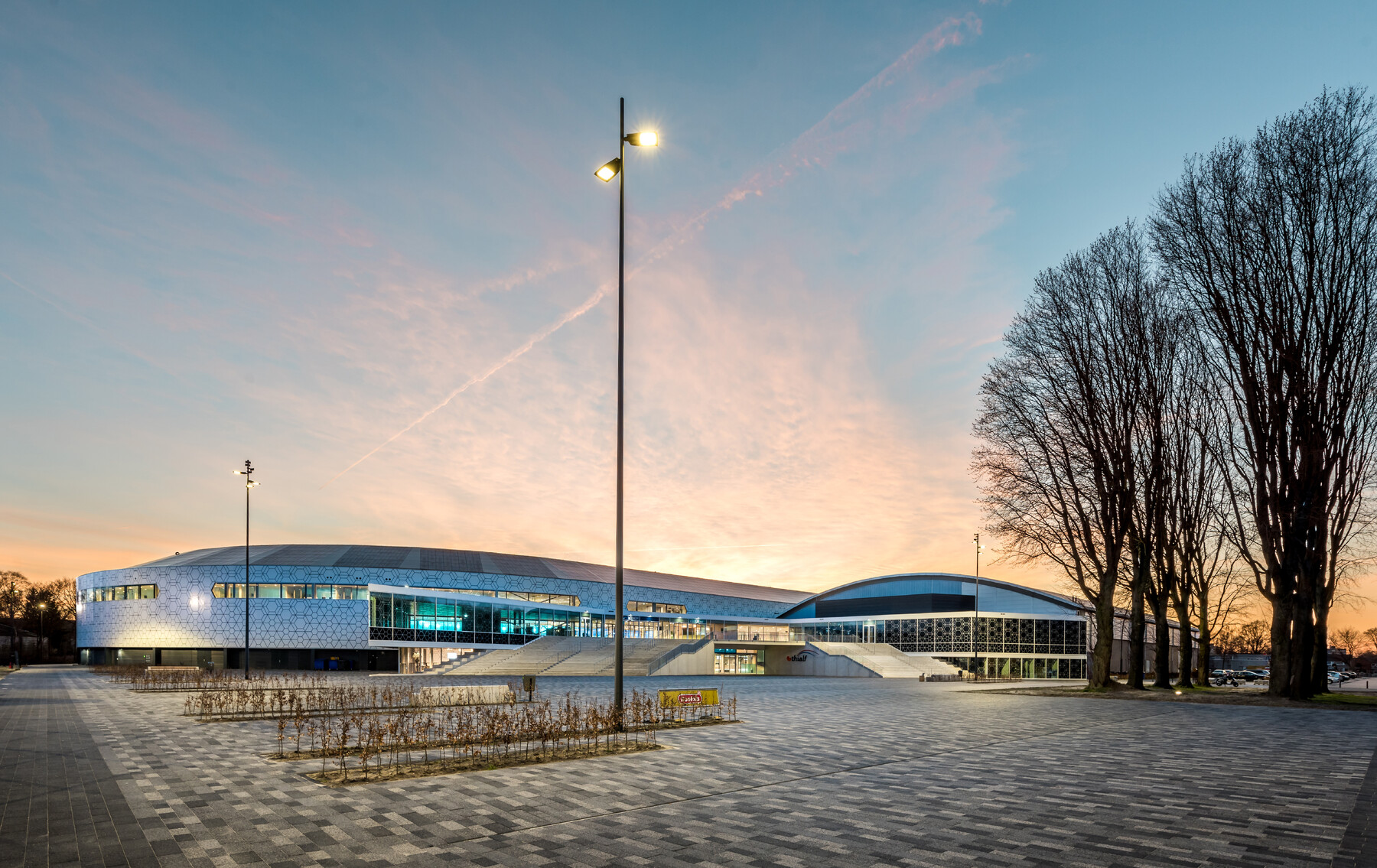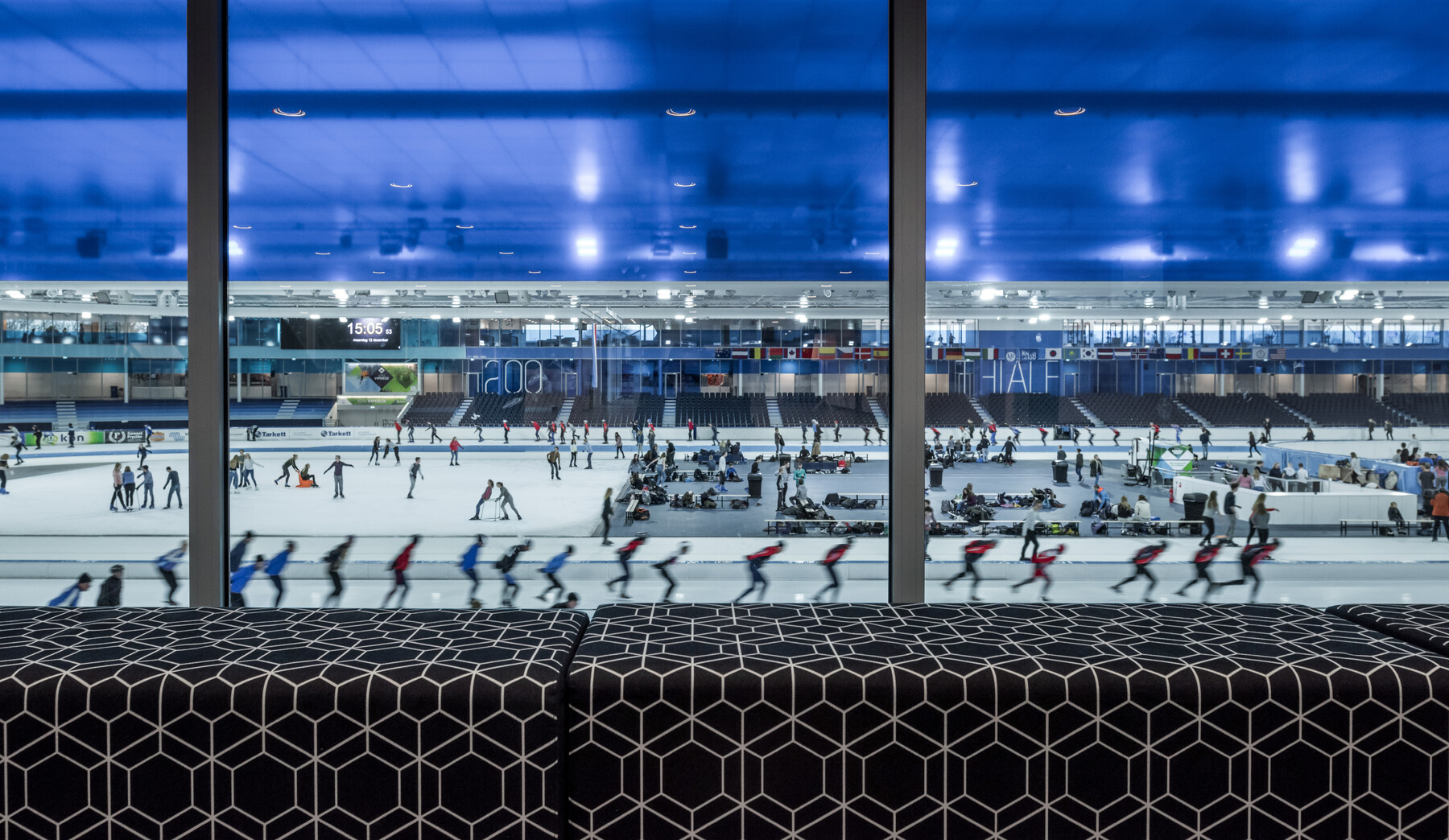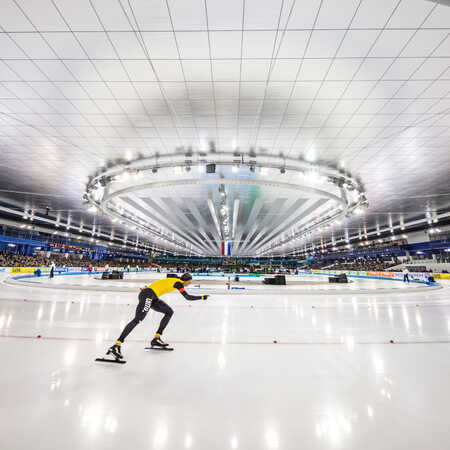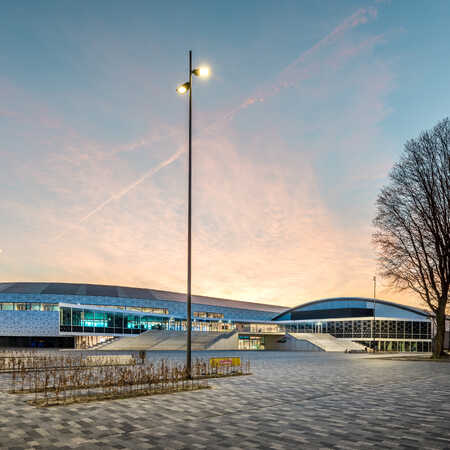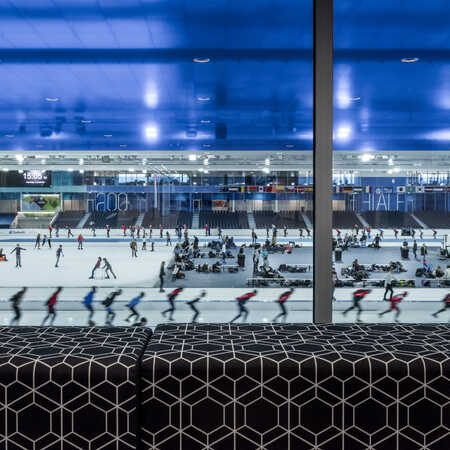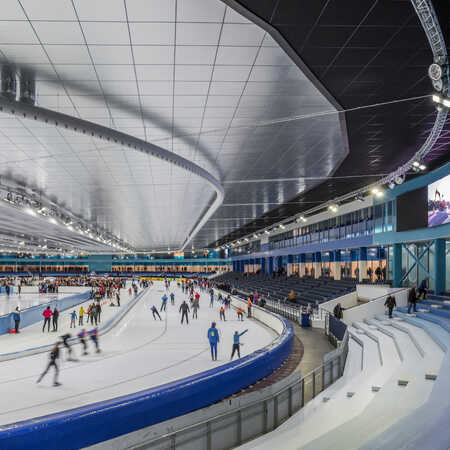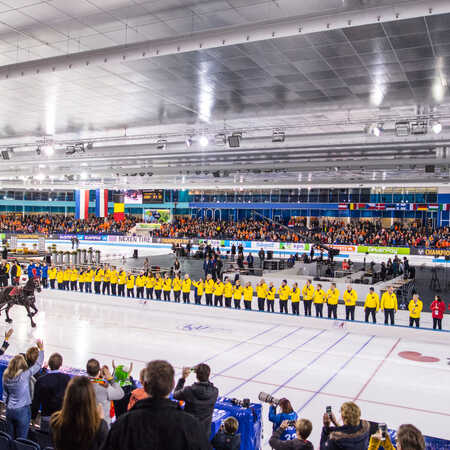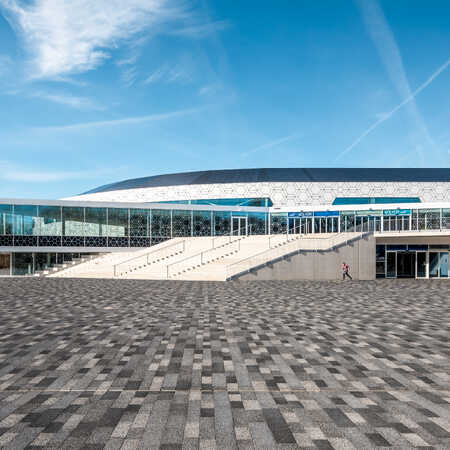Sport experience
The dynamics of entering Thialf are expressed in the design of the entrance. Two 'arms' of glass extend outwards to embrace the stream of visitors. Inside, a promenade is the connecting element of all functions. During events, all visitors can easily access all the stands via this promenade. Serving points and public meeting places are located along the promenade. Its glass wall increases the interaction between athletes and the public, in this way contributing to an all-round sports experience.
Optimal ice skating conditions
While the promenade inside makes meaningful connections, it also isolates the competition area from outside, thus allowing for a better indoor climate. Moisture, brought in by the wet coats of spectators, is absorbed and filtered out. In the past, the moist condensed on the ice and reduced the speed of skaters. By including an air curtain between the public and the competition area, and separating the promenade - each with its specific thermal conditions - the temperature and humidity can easily be managed separately.
Moreover, the ice temperature can be tuned to the precision of the tenth degree and adjusted for each track section. In the renewed ice arena, top athletes have access to the fastest ice and the best 400-metre lowland track.
Sustainability
The renewed Thialf is an extension of the oval structure of the existing building. To preserve what still can be used is a contribution to sustainability. Initially, it was the intention to reduce energy consumption up to 50%. A high level of thermal insulation, the application of underground heat and cold storage, as well as LED lighting, contribute to an energy reduction of more than 50%.
Thialf not only uses but also produces energy by means of 5000 solar panels on its roof. It has the intention to fully provide for its own energy needs within 5 years. It will then also provide enough energy for 1,250 households. At this moment, the ice arena has the largest sunroof of all stadiums in The Netherlands and is the most sustainable ice arena in the world.
Gallery
Awards
Winner: German Design Award 2018
Nominations: World Architecture Festival (WAF) Award 2018, Architizer A+Awards 2017, WAN Sport in Architecture Award 2017, Dutch Concrete Award 2017
Architect: ZJA
Client: Thialf OG b.v., Heerenveen
Principal: Heddes Bouw & Ontwikkeling
Electrical engineering: Croonwolter&dros
Mechanical engineering: Warmtebouw
Branding and interior design: DAY Creative Business Partners
Year: 2017
Project: #760
Photographs: Marco Lubbers - Catchyourmoment & Roy Klompmaker
Related
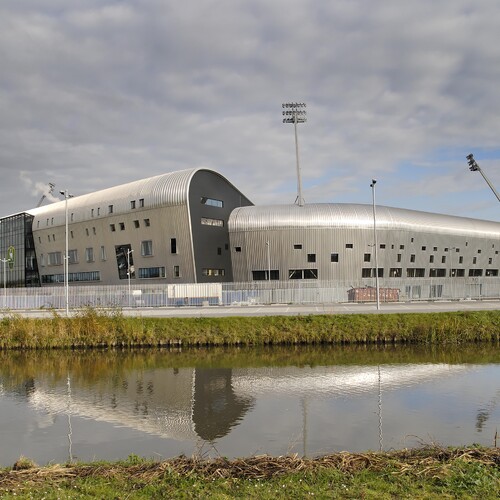
ADO stadium, The Hague
A landmark for The Hague
Since the summer of 2007, approaching the city of The Hague by car means having your eyes drawn to a familiar landmark: the billowing…

Renovated Feyenoord Stadium, Rotterdam
The Renovated Kuip
For many years, there has been a debate about the future of the old Feyenoord stadium (a.k.a. De Kuip/The Tub) in Rotterdam. After it was…
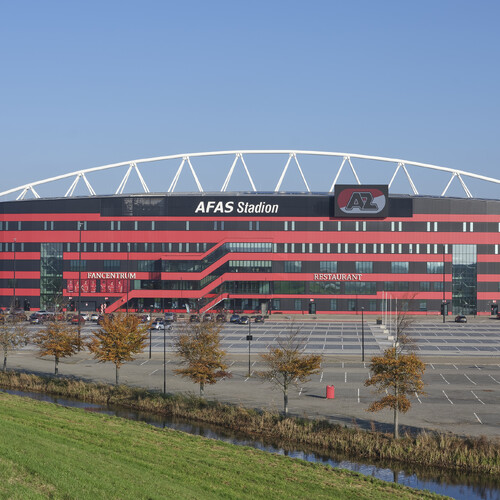
AFAS stadium AZ, Alkmaar
A Theatre for Football
Along the motorway A9, just south of Alkmaar, lies the stadium of AZ football club. The original stadium was realized in 2007, based on a…
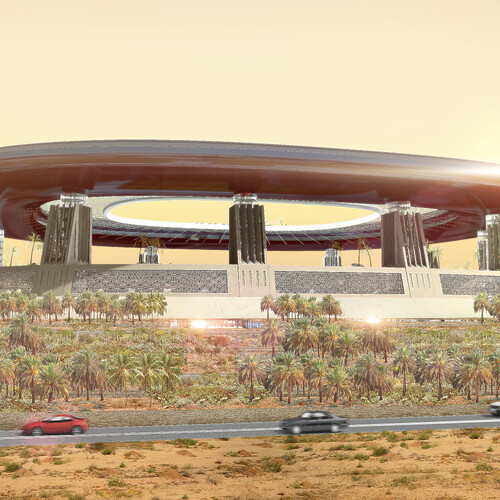
Dubai Sports Central, Dubai
Multifunctional stadium in the desert
Dubai Sports Central combines football facilities with luxurious gardens, shops, and apartments, where the architecture merges into a…
